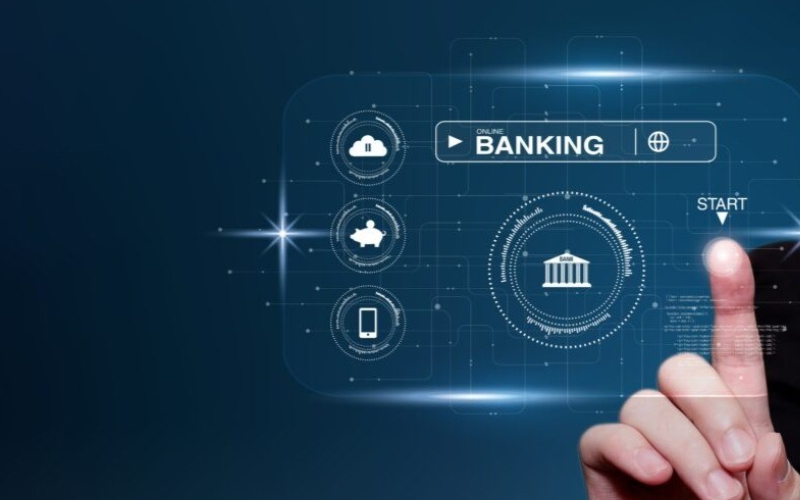Are They the Future of Banking industry has seen a dramatic transformation with the rise of neobanks—a new breed of financial institutions that operate entirely online or via mobile apps. These digital-first banks are challenging the traditional banking model, offering a more streamlined, tech-savvy approach to managing money. The surge in neobanks’ popularity raises the question: Are neobanks the future of banking? To answer this, we need to explore the driving forces behind their rise, their unique advantages, challenges, and how they may reshape the financial landscape in the years to come.
1. What Are Neobanks?
Are They the Future of Banking to as challenger banks, are fully digital banks that operate without physical branches. Unlike traditional banks, which rely on brick-and-mortar locations and legacy systems, neobanks leverage the power of technology to offer a broad range of financial services through mobile applications and online platforms.
These services typically include checking and savings accounts, payments, money transfers, loans, and even wealth management tools. Neobanks use advanced technologies such as artificial intelligence (AI), machine learning (ML), and automation to deliver seamless and personalized customer experiences, often at lower costs than traditional banks.
Key Features of Neobanks:
- Digital-first platforms: All services are accessed online or through mobile apps.
- Low fees: Neobanks often charge fewer or no fees for account maintenance, transfers, and foreign transactions.
- No physical branches: Neobanks operate entirely in the digital space, which allows them to cut overhead costs.
- Personalized experiences: AI and data analytics enable neobanks to offer tailored products and services to individual users.
2. The Growth of Neobanks: A Disruptive Force in Banking
Are They the Future of Banking been fueled by a combination of changing consumer preferences and advancements in technology. According to a 2023 report from KPMG, over 50 million people in the United States alone use digital banks, and this number is expected to grow rapidly in the coming years. The success of neobanks can be attributed to several key factors:
A. Consumer Demand for Convenience and Efficiency
Traditional banking services often involve lengthy processes, hidden fees, and inconvenient hours. Neobanks have tapped into the growing demand for convenience, offering users the ability to access their accounts, make payments, transfer money, and even apply for loans, all from their smartphones. The shift to digital-first platforms allows customers to manage their finances in real-time, anytime, anywhere.
B. The Power of Technology
Neobanks are built on cutting-edge technologies such as cloud computing, blockchain, and AI, which not only allow them to reduce costs but also enhance the customer experience. For example, AI-powered chatbots are used to answer customer queries in real-time, while data analytics helps personalize financial products and services to meet the unique needs of individual users.
C. Global Trends and Financial Inclusion
Neobanks are particularly appealing in emerging markets where traditional banking infrastructure is limited or unavailable. By offering low-cost digital banking services, neobanks are helping bring financial inclusion to underserved populations. In regions like Africa, Southeast Asia, and Latin America, neobanks are empowering people to access banking services through smartphones, overcoming barriers such as lack of physical branches and expensive banking fees.
3. Advantages of Neobanks Over Traditional Banks
Neobanks have a range of advantages that have contributed to their rapid rise in popularity. Let’s explore some of the key benefits they offer to customers and the banking sector:
A. Lower Costs for Consumers
One of the most attractive features of neobanks is their low-cost structure. Because they don’t have physical branches to maintain, neobanks can pass on the savings to customers in the form of lower fees for services like account maintenance, ATM withdrawals, and foreign transactions. For example, many neobanks offer fee-free checking accounts, no minimum balance requirements, and unlimited free transfers, making them highly appealing to cost-conscious customers.
B. Seamless Digital Experience
Neobanks focus on delivering a seamless digital experience, which is something traditional banks often struggle with due to their reliance on outdated systems and infrastructure. This creates a more efficient, enjoyable banking experience that aligns with the expectations of today’s digital-first consumers.
C. Personalization Through Data
Another significant advantage of neobanks is their ability to offer personalized financial products. By leveraging customer data and advanced analytics, neobanks can create tailored offers based on individual spending habits, goals, and financial behaviors.
